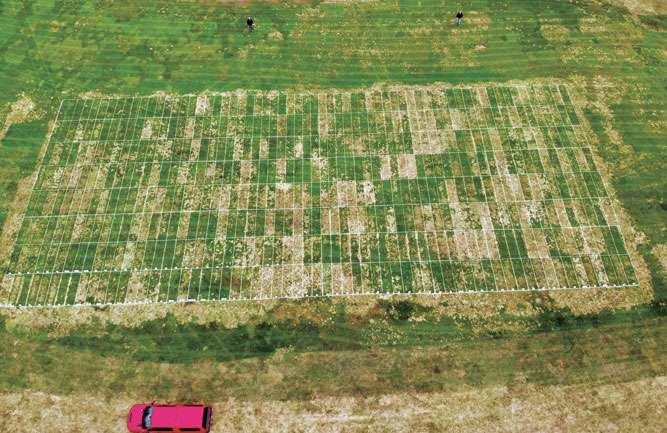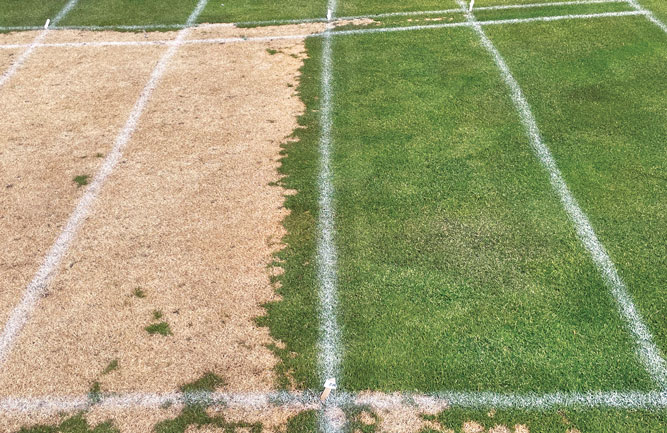What lurks beneath the snow… snow mold
You’d think golf course superintendents in my territory would get a break during winter months. After all, weather in the North Central Region can be brutal from November through March. But there’s one thing they have to prepare for each year—the threat of snow mold.
Snow mold can be nasty. Despite good cultural practices and proper fertility, golf course turf may not be hardy enough to withstand snow mold. Turfgrasses are weakened by low temperatures, especially when covered with a blanket of snow for long stretches of time. And that’s when fungi that thrive in cold temperatures move in and take over.
Two types of snow mold are prevalent on cool-season golf course turf:
- Typhula blight – gray or speckled snow mold. Symptoms are circular straw-colored or grayish brown infection spots, ranging from 3 to 24 inches. Infected turf is matted with grayish white mycelium of the fungus along the margins of the diseased area shortly after snow melt.
- Microdochium nivale – pink snow mold. Plants with Microdochium patch will appear water-soaked, necrotic or chlorotic. On dead plants superintendents might see pink structures – hence the name – but they are not always observed.
Snow mold damage compromises turf quality and delays turf recovery when the temperature rises. Damaged turf is also vulnerable to encroachment by weeds, including annual bluegrass.
Plan in Fall for Success in Spring
So superintendents in Michigan, Wisconsin and the northern parts of Illinois, Indiana and Ohio know they must plan in the fall for success in the spring. Fortunately for them — and superintendents throughout the rest of the country who face other diseases – Fame ™ +T fungicide is here.
Fame +T is a suspension concentrate combination of Fluoxastrobin and Tebuconazole that optimizes resistance management with dual modes of action. University testing has shown that it protects from both root and foliar diseases, including dollar spot, snow mold and brown patch.
Fame +T offers quick penetration of leaf surfaces, allowing translaminar movement throughout the plant tissue. At the same time, systemic root activity allows turf to readily take up Fluoxastrobin and translocate it throughout the xylem to all plant parts.
To protect your turf against pink and gray snow molds, make a single application of Fame +T prior to permanent snow cover. If two applications are needed, make the first application at the beginning of dormancy and another one just prior to permanent snow cover.
Now that Fame +T is available, golf course superintendents can relax more during those long winter months and not worry about what awaits them in the spring when the snow melts.
A.J. Hephner is FMC market specialist for the North Central Midwest Region.










